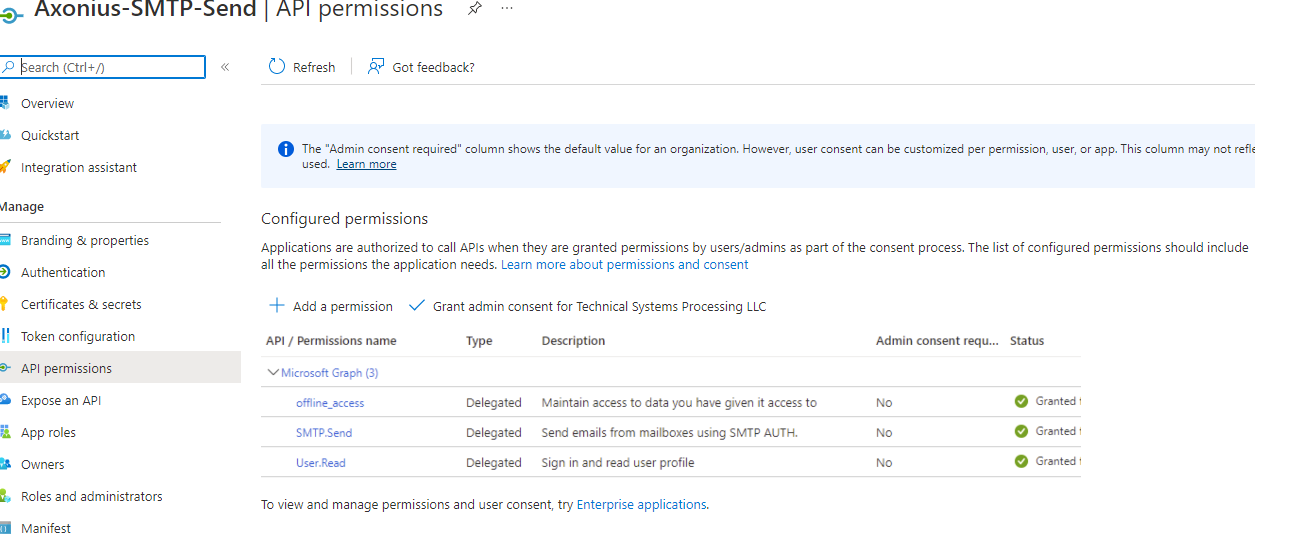Configuring Email Settings
You can configure an email server so that you can send an email notification as part of an enforcement set or send a report by email.
To configure Email settings:
-
From the top right corner of any page, click
.png) . The System Settings page opens.
. The System Settings page opens. -
In the Categories/Subcategories pane of the System Settings page, expand External Integrations, and select Email.
- Send emails (required, default: switched off) - Toggle on to use an Email server. A configured Email server is a prerequisite before you can configure an email notification as part of a configured Enforcement Set or configuring a report to be sent via mail.
- SMTP gateway - Select the Gateway to use for SMTP.
- Define the Email host name and Port.
- SMTP Authentication Type - Select the SMTP Authentication type:
- Password Authentication
- Azure Authentication
- OAuth2 Authentication
Password Authentication
When you choose Password Authentication, you can configure a User name and Password (optional).
Azure Authentication
Required Permissions
The user needs to have the following application-level permissions: Mail.Send or Mail.Send.Shared.
Select Azure Authentication to send email using MS Graph API, and configure the following settings:
-
Client ID - The client ID from the Azure application.
-
Client secret - The client secret from the Azure application.
-
Tenant ID - The Tenant ID from the Azure application.
-
Sender address - Enter a sender address from which the mail will be sent. The Sender address needs to have an Exchange Online license for Microsoft 365 to be able to send emails.
OAuth2 AuthenticationWhen you choose OAuth2 Authentication, set the following:
-
OAuth authentication email - The email for which the OAuth token was created.
-
OAuth client ID - Standard OAuth parameter
-
OAuth client secret - Standard OAuth parameter
-
OAuth refresh token - The derived value of creating active tokens from Client ID and Secret ID (procedure is standard)
-
OAuth URL - The URL to authenticate with and which generates the Access tokens, for example:
https://login.microsoftonline.com/{tenant}/oauth2/v2.0/token
https://accounts.google.com/o/oauth2/token
Microsoft Entra ID (Azure AD) Permissions
You need to grant the following permissions

Note
Microsoft has deprecated the Outlook REST APIs; it is recommended to use the Graph API (Azure Authentication)
General Email Configuration
- Use SSL for connection - Configure the connection to be Unencrypted, Verified, or Unverified.
- When you select the Verified or Unverified options, you need to provide the SSL CA file, Certificate file, and Private key file.
- When you select the Unencrypted option, the system attempts using TLS when sending emails (the default; no TLS configuration required). If TLS fails and the connection is active (if lost, the system first reestablishes the connection), the system proceeds to send emails without TLS.
- Define the Sender address for all emails sent by Axonius. If empty, the sender address is '[email protected]'.
- Compress email attachments (default, false) - Select this option to compress email attachments. This affects email attachments sent from reports and those sent as part of the Send email Enforcement Set action.
- When this feature is activated, email attachments are sent as one compressed attachment in zip format.
- When this feature is not activated, all email attachments are not compressed, and are sent as separate files.
Note
If attachments are larger than 10 Megabytes, the system notifies you that the email is 'big' (as some systems have a limitation on the size of emails that they can handle).
Updated 4 days ago
